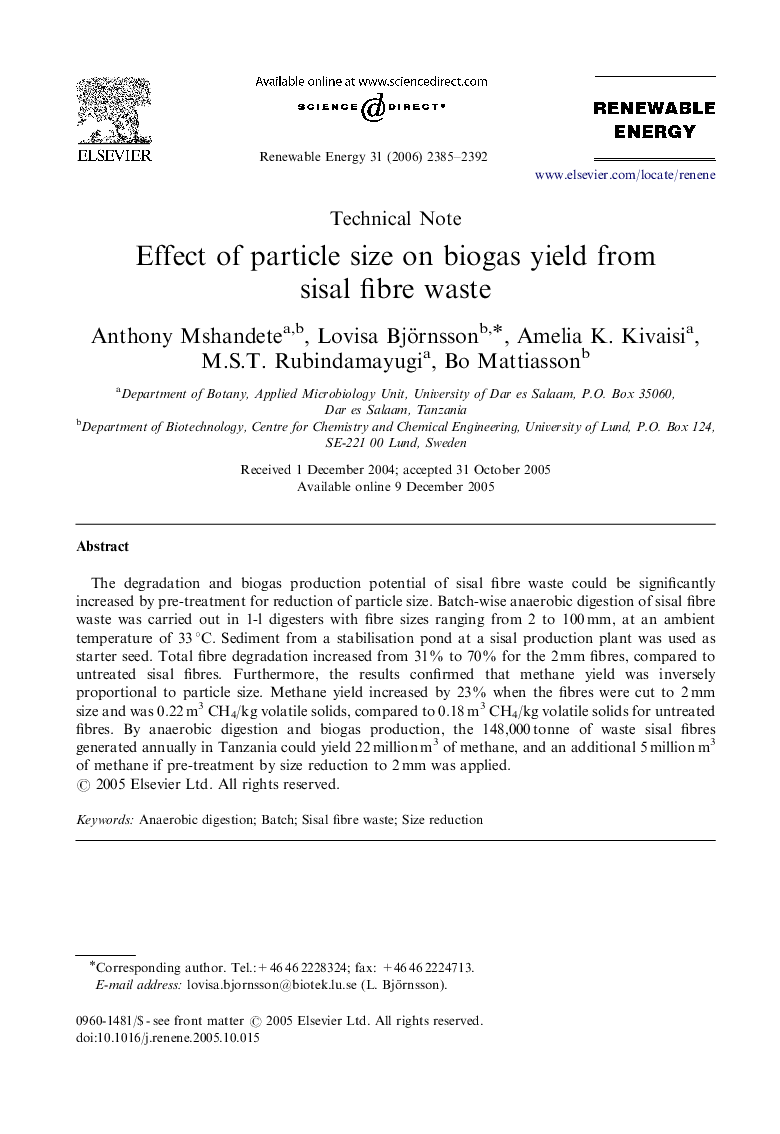| Article ID | Journal | Published Year | Pages | File Type |
|---|---|---|---|---|
| 302970 | Renewable Energy | 2006 | 8 Pages |
The degradation and biogas production potential of sisal fibre waste could be significantly increased by pre-treatment for reduction of particle size. Batch-wise anaerobic digestion of sisal fibre waste was carried out in 1-l digesters with fibre sizes ranging from 2 to 100 mm, at an ambient temperature of 33 °C. Sediment from a stabilisation pond at a sisal production plant was used as starter seed. Total fibre degradation increased from 31% to 70% for the 2 mm fibres, compared to untreated sisal fibres. Furthermore, the results confirmed that methane yield was inversely proportional to particle size. Methane yield increased by 23% when the fibres were cut to 2 mm size and was 0.22 m3 CH4/kg volatile solids, compared to 0.18 m3 CH4/kg volatile solids for untreated fibres. By anaerobic digestion and biogas production, the 148,000 tonne of waste sisal fibres generated annually in Tanzania could yield 22 million m3 of methane, and an additional 5 million m3 of methane if pre-treatment by size reduction to 2 mm was applied.
